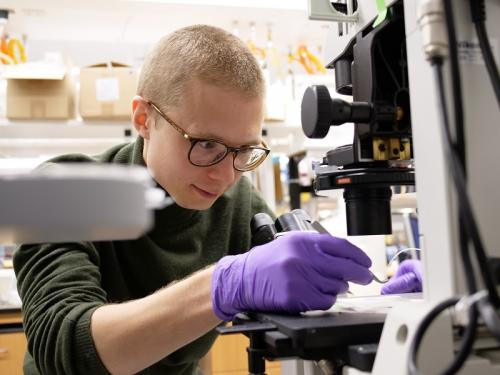Article "Molecular diversification of regulatory T cells in nonlymphoid tissues" was published in "Science Immunology" on September 14. Rapolas Žilionis, PhD student at Vilnius University Life Sciences Center (VU LSC) is the co-author of the paper.
Foxp3+CD4+ regulatory T cells (Tregs) accumulate in certain nonlymphoid tissues, where they control diverse aspects of organ homeostasis. Populations of tissue Tregs, as they have been termed, have transcriptomes distinct from those of their counterparts in lymphoid organs and other nonlymphoid tissues. The team of scientists mostly from Harvard Medical School examined the diversification of Tregs in visceral adipose tissue, skeletal muscle, and the colon vis-à-vis lymphoid organs from the same individuals. A bioinformatically and experimentally validated transcriptional network, constructed by integrating chromatin accessibility and single-cell transcriptomic data, predicted reliance on different TF families in the different tissues. The network analysis also revealed that tissue-restricted and broadly acting TFs were integrated into feed-forward loops to enforce tissue-specific gene expression in nonlymphoid-tissue Tregs. Overall, this study provides a framework for understanding the epigenetic dynamics of T cells operating in nonlymphoid tissues, which should inform strategies for specifically targeting them.
R. Žilionis was also a member of a team from Harvard Medical School that reported the discovery of a new, rare type of cell in the human airway. The paper was published online in Nature on August 1, 2018.

